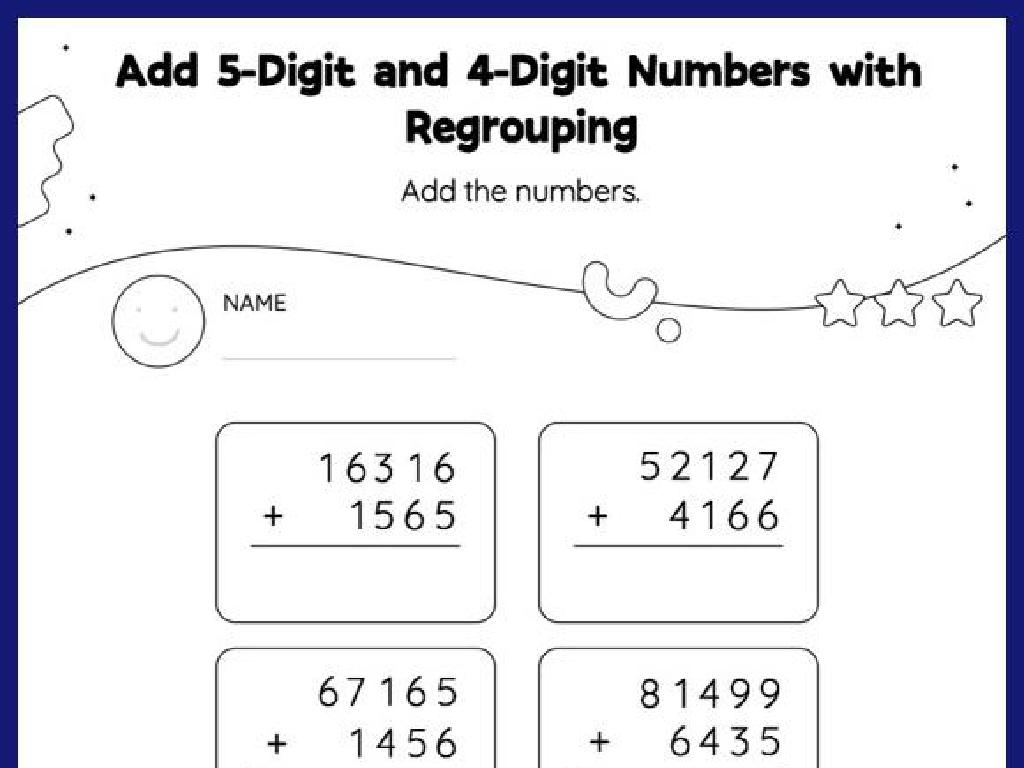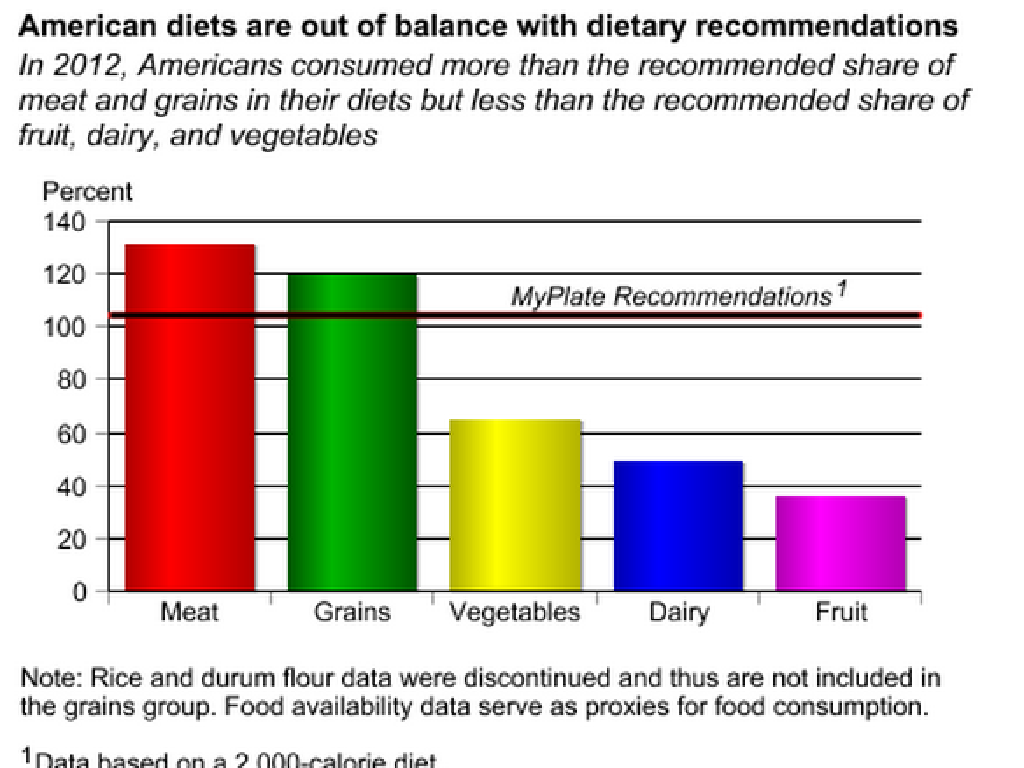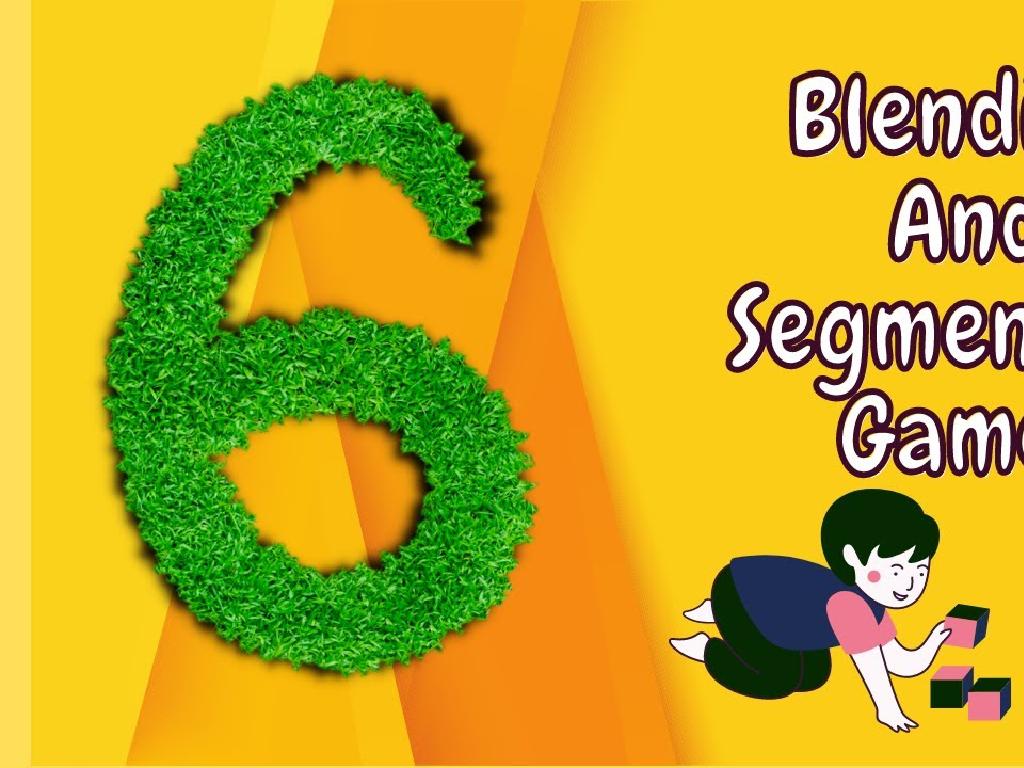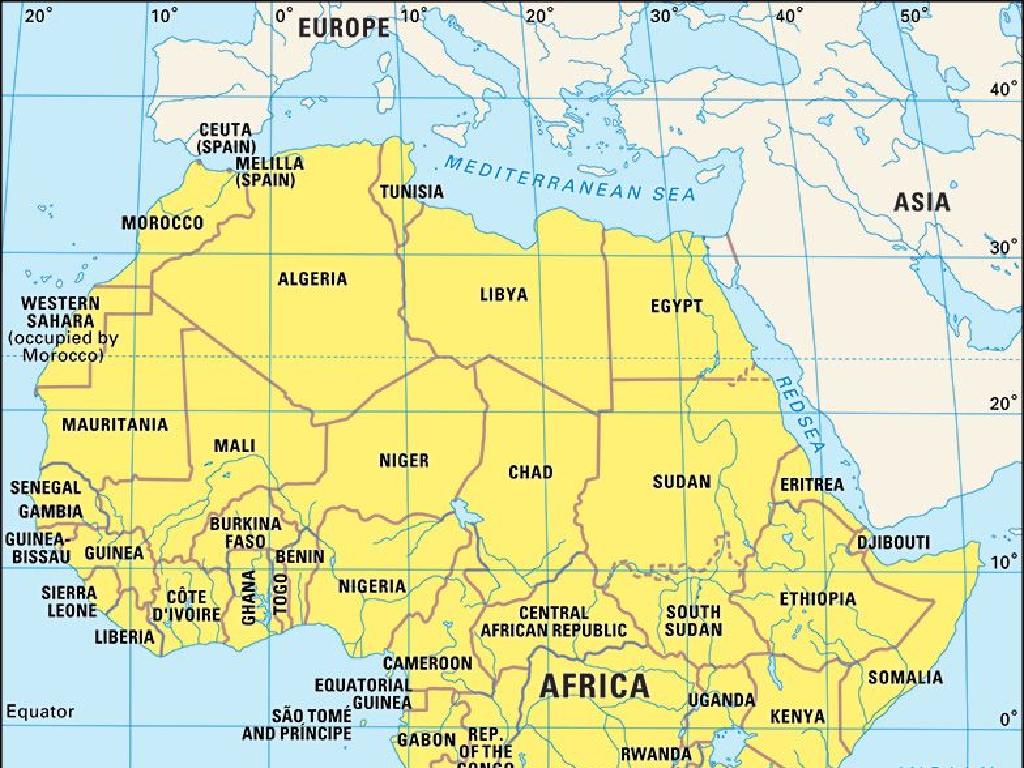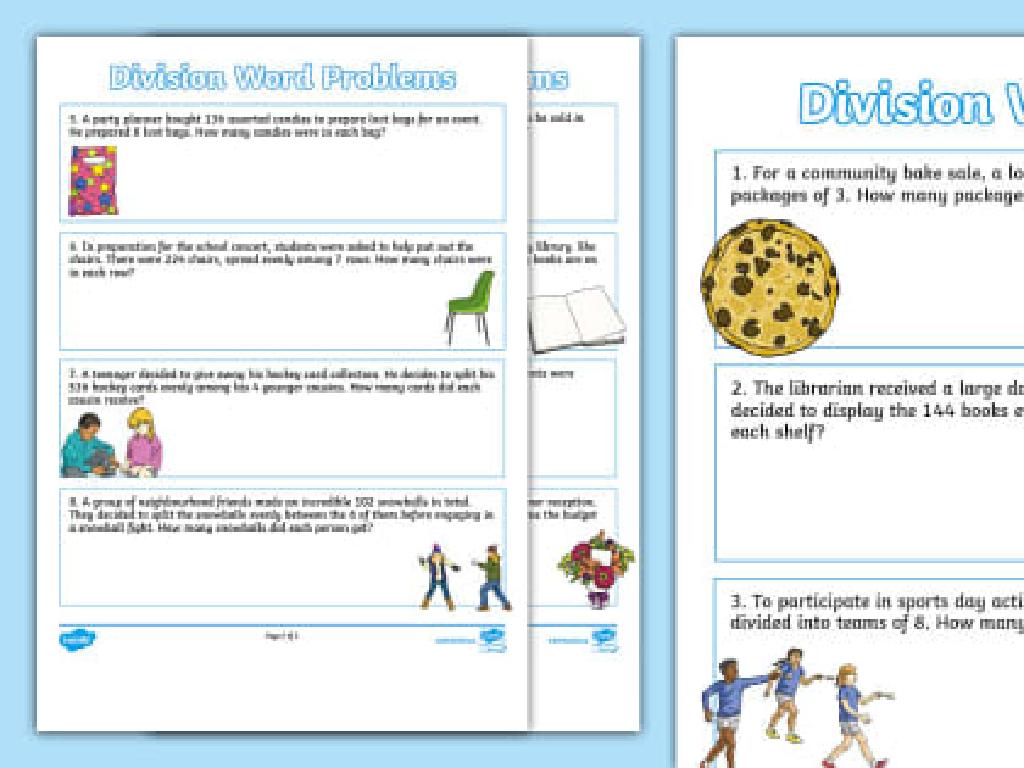Construct Animal Life Cycle Diagrams
Subject: Science
Grade: Third grade
Topic: Animals
Please LOG IN to download the presentation. Access is available to registered users only.
View More Content
Exploring Animal Life Cycles
– Learn about animal life cycles
– How animals grow and change
– Animals start as babies, grow into adults, and have babies of their own
– Create your own life cycle diagram
– Choose an animal and draw the stages of its life
– Share your diagrams with the class
– Present your diagram and explain each stage
|
This slide introduces the concept of animal life cycles to third-grade students. Begin by explaining that all animals, including humans, go through different stages in their lives. Discuss the common stages of life such as birth, growth, reproduction, and eventually, death. Encourage students to think about how a tiny caterpillar becomes a butterfly or how a puppy grows into a dog. For the activity, each student will select an animal, research its life cycle, and create a diagram illustrating the stages of life. Provide examples of simple life cycle diagrams and ensure students understand the task. In the next class, students will present their diagrams and explain the life cycle stages they’ve illustrated. This will help reinforce their understanding and allow them to practice their presentation skills.
Understanding Animal Life Cycles
– What is a life cycle?
– Series of changes from birth to adulthood
– Each animal’s life cycle is unique
– For example, a butterfly and a frog have different life cycles
– Common life cycle stages
– Birth, growth, reproduction, and death
– Life cycle stages: birth to death
|
This slide introduces the concept of life cycles in animals, which is a fundamental part of understanding biology and the development of organisms. Emphasize that a life cycle is a natural process that every living creature goes through, and it can vary greatly among different species. Use examples like the metamorphosis of a butterfly or the development of a frog from a tadpole to illustrate the diversity in life cycles. Encourage students to think about the life cycle stages of familiar animals and how each stage is important for the survival of the species. This will set the foundation for creating and interpreting life cycle diagrams in future lessons.
Life Cycle of a Butterfly
– Start with the butterfly egg
– Tiny eggs laid on leaves
– Grow into a larva, the caterpillar
– Caterpillar eats a lot to grow
– Change into a pupa, the chrysalis
– Caterpillar rests in a chrysalis
– Emerge as an adult butterfly
– Beautiful butterfly comes out!
|
This slide introduces the concept of metamorphosis through the example of a butterfly’s life cycle. Explain each stage starting with the egg and how it hatches into a larva, which we commonly know as a caterpillar. Emphasize the caterpillar’s growth and how it forms a chrysalis (pupa stage) around itself as a protective shell. Inside the chrysalis, the caterpillar undergoes a transformation, emerging as an adult butterfly. Highlight the term ‘metamorphosis’ as a significant change that occurs during the life cycle of certain animals, including butterflies. Encourage students to observe the changes in each stage and relate it to the concept of growth and change in living organisms. Provide clear and simple explanations suitable for third graders, and use visuals if possible to enhance understanding.
Life Cycle of a Frog
– Frogs start as eggs
– Eggs are laid in water
– Tadpoles hatch from eggs
– Tadpoles swim and have gills
– Froglets: Tadpoles with legs
– Froglets have tiny legs and tails
– Adult frogs: Fully grown
– Adult frogs can live on land
|
This slide introduces the life cycle of a frog, which is a classic example of metamorphosis in animals. Start by explaining that the life cycle begins with eggs, usually laid in water. As the eggs hatch, tadpoles emerge, which are baby frogs that can swim and breathe underwater using gills. As tadpoles grow, they develop legs and their tails shorten, becoming froglets. Eventually, they transform into adult frogs, capable of living on land and starting the cycle again by laying eggs. Encourage students to observe the changes in body structure during each stage. Use diagrams to visually represent the cycle and discuss the concept of metamorphosis as a significant transformation in the animal kingdom.
Animal Life Cycles: Growth Without Metamorphosis
– Some animals don’t metamorphose
– Example: Chicken Life Cycle
– Starts as an egg, becomes a chick, then an adult chicken
– Chickens grow but keep their shape
– Unlike a caterpillar to a butterfly, chickens just get bigger
– Understanding non-metamorphic cycles
|
This slide introduces the concept of animal life cycles without metamorphosis, which is a direct contrast to animals like butterflies that go through dramatic changes. Use the chicken as an example because it’s relatable and observable. Chickens begin life as an egg, hatch into chicks, and grow into adult chickens without significant changes in their body plan. This concept is important for students to understand that not all animals undergo metamorphosis, and life cycles can vary greatly among different species. Encourage students to think of other animals they know that grow bigger without changing their body shape dramatically.
Your Turn: Diagram the Life Cycle
– Pick your favorite animal
– Research its life stages
– Find out the stages like ‘birth’, ‘growth’, ‘reproduction’, ‘death’
– Draw the life cycle diagram
– Use a circle to show the cycle and arrows to show the order
– Label each stage clearly
– Write the names like ‘puppy’, ‘adult dog’, ‘parent dog’
|
This activity is designed to help students understand the concept of life cycles by researching and visualizing the stages of an animal’s life. Encourage them to choose an animal they are interested in to foster engagement. Provide guidance on how to research effectively, perhaps suggesting library books or kid-friendly websites. Remind them to look for key stages such as birth, growth, reproduction, and death. Instruct them on how to draw a circular diagram to represent the cyclical nature of life stages, using arrows to indicate the progression from one stage to the next. Ensure they label each stage with the correct term for that animal’s life phase. This hands-on activity will aid in solidifying their understanding of life cycles. Prepare to assist students who may need help with drawing or labeling their diagrams.
Class Activity: Life Cycle Poster Creation
– Pick an animal in groups
– Create a life cycle poster
– Show stages like birth, growth, reproduction, and death
– Include pictures and labels
– Present and explain to the class
– Describe what happens in each stage
|
This activity is designed to help students understand the concept of life cycles by creating a visual representation. Divide the class into small groups and assign or let them choose an animal to research. Provide materials for drawing or printing pictures. Each group should label the stages of their animal’s life cycle on their poster. Encourage creativity and ensure they understand the stages: birth, growth, reproduction, and death. When presenting, each group will explain their poster to the class, reinforcing their learning and public speaking skills. Possible animals include butterflies, frogs, chickens, or even plants for variety. Assess each group’s understanding by their ability to explain the life cycle stages accurately.
Review: Animal Life Cycles
– Recap on life cycles learned
– Discuss unique animal life cycles
– Some animals, like jellyfish, have complex life cycles
– Share interesting life cycle facts
– What was surprising or new about how animals grow?
– Engage with questions and answers
|
This slide aims to consolidate the students’ learning about animal life cycles. Start by summarizing the key points covered in the lesson, such as the stages of a butterfly or frog’s life cycle. Encourage students to think about and discuss any unique life cycles they might know, like that of a jellyfish, which includes both polyp and medusa stages. Ask students to share what they found most interesting, whether it’s metamorphosis or the longevity of certain animals. Use this opportunity to assess understanding and clear up any misconceptions. The discussion should be interactive, with a focus on reinforcing the concepts through student engagement.
Homework: Animal Life Cycle Diagram
– Review today’s life cycle lessons
– Draw a new animal’s life cycle
– Choose an animal we didn’t cover in class
– Use creativity in your diagram
– Include stages like birth, growth, reproduction
– Share your work with the class
– Be prepared to explain your diagram to classmates
|
This slide concludes the lesson on animal life cycles and assigns homework to reinforce the concepts learned. Students are tasked with drawing the life cycle of an animal that was not discussed in class, encouraging them to apply their understanding independently. Remind them to depict each stage of the life cycle clearly and to be creative with their diagrams. The activity will culminate in a sharing session where students will present and explain their work to the class, fostering communication skills and peer learning.

